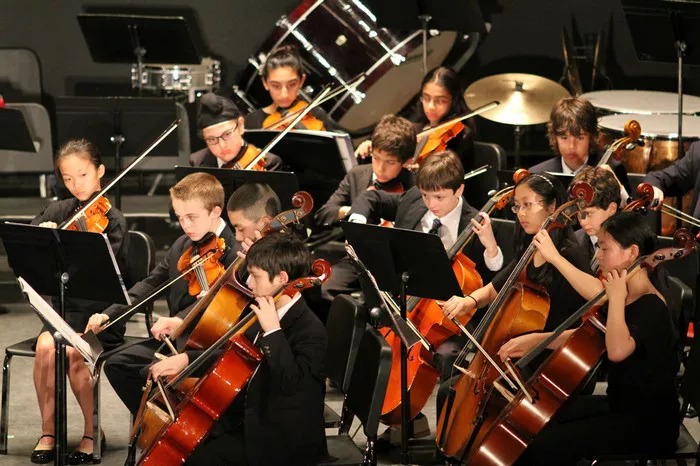Spanish classical music is a rich and diverse genre that reflects the country’s vibrant cultural heritage, blending influences from various regions and historical periods. From the medieval chants of the Mozarabic tradition to the Renaissance polyphony of composers like Tomás Luis de Victoria, and the passionate melodies of the Romantic era embodied by Isaac Albéniz and Manuel de Falla, Spanish classical music encompasses a wide range of styles and expressions. In this article, we will explore the history, characteristics, prominent composers, and notable works that define Spanish classical music.
I. Historical Overview
Spanish classical music has its roots in ancient traditions dating back to the medieval period. The influence of Moorish, Jewish, and Christian cultures during the Middle Ages contributed to a unique musical heritage known as the Mozarabic chant. This early form of Spanish sacred music blended Arabic melodic elements with Christian liturgical texts, creating a distinctive sound that resonates in the works of later composers.
During the Renaissance, Spain experienced a flourishing of musical creativity, particularly in the realm of polyphony. Composers such as Tomás Luis de Victoria, Francisco Guerrero, and Cristóbal de Morales rose to prominence, crafting intricate choral works that reflected the religious fervor of the time. The Spanish Golden Age, marked by the reign of King Philip II, saw the establishment of chapels and musical institutions that nurtured the development of sacred and secular music.
The Baroque era brought new influences to Spanish music, with composers like Juan Hidalgo pioneering the zarzuela, a form of Spanish opera that combined spoken dialogue with sung passages. This period also witnessed the rise of keyboard music, with composers like Antonio Soler and Domenico Scarlatti creating virtuosic works for the harpsichord and organ.
The 19th and early 20th centuries marked a period of nationalistic fervor in Spanish music, with composers such as Isaac Albéniz, Enrique Granados, and Manuel de Falla incorporating folk melodies and dance rhythms into their compositions. This era also saw the emergence of the “Generation of ’27,” a group of avant-garde composers including Joaquín Rodrigo and Xavier Montsalvatge, who explored new harmonic languages and forms.
II. Characteristics of Spanish Classical Music
Spanish classical music is characterized by its melodic richness, rhythmic vitality, and emotional depth. The influence of folk music, dance forms such as the fandango, flamenco, and habanera, imbues many compositions with a distinctively Spanish flavor. Harmonically, Spanish composers often utilize modal scales and chromaticism to evoke a sense of passion and drama.
One of the defining features of Spanish classical music is its use of color and texture. Composers frequently employ orchestral timbres and instrumental combinations to create evocative sonic landscapes. From the lush orchestrations of Falla’s “Nights in the Gardens of Spain” to the rhythmic intensity of Rodrigo’s “Concierto de Aranjuez,” Spanish composers have explored a wide range of tonal palettes.
Another notable aspect of Spanish classical music is its connection to dance. Many compositions, such as Albéniz’s “Suite Española” and Granados’s “Danzas españolas,” incorporate dance forms like the bolero, seguidilla, and jota, capturing the energy and vitality of Spanish folk traditions.
See Also: Greatest French Classical Composers
III. Prominent Composers
Tomás Luis de Victoria (1548-1611): A renowned Renaissance composer known for his sacred choral works, Victoria’s compositions display a deep spirituality and intricate polyphonic craftsmanship.
Isaac Albéniz (1860-1909): A leading figure of Spanish nationalism, Albéniz’s piano compositions, including the “Iberia Suite,” reflect his fascination with Spanish folk music and landscapes.
Manuel de Falla (1876-1946): One of Spain’s most celebrated composers, Falla’s music blends elements of impressionism, folk traditions, and modernism. His ballet “The Three-Cornered Hat” and opera “La vida breve” are among his most famous works.
Enrique Granados (1867-1916): Known for his lyrical piano music and zarzuelas, Granados’s compositions, such as “Goyescas,” capture the emotional depth and passion of Spanish music.
Joaquín Rodrigo (1901-1999): Famous for his “Concierto de Aranjuez” for guitar and orchestra, Rodrigo’s music combines classical forms with Spanish folk elements, creating a uniquely expressive style.
IV. Notable Works
Isaac Albéniz – “Asturias (Leyenda)”: A mesmerizing piano piece from Albéniz’s “Suite Española,” “Asturias” captures the rugged beauty of the Spanish landscape with its haunting melodies and intricate harmonies.
Manuel de Falla – “El Amor Brujo”: A ballet score filled with vibrant rhythms and exotic melodies, “El Amor Brujo” showcases Falla’s mastery of orchestration and evocative storytelling.
Enrique Granados – “Danza española No. 5 (Andaluza)”: This lively dance from Granados’s collection of “Danzas españolas” exemplifies the rhythmic vitality and elegance of Spanish music.
Joaquín Rodrigo – “Concierto de Aranjuez”: A beloved work for guitar and orchestra, Rodrigo’s “Concierto de Aranjuez” is renowned for its lyrical beauty, expressive melodies, and evocative Spanish themes.
See Also: 4 Best Ethiopian Classical Music Collections
V. Influence on Global Music and Contemporary Relevance
Spanish classical music has left an indelible mark on the global music scene, influencing composers and musicians across genres. Its fusion of diverse musical elements, passionate expression, and cultural resonance continues to captivate audiences worldwide.
In contemporary times, artists like Pablo Sáinz Villegas and Javier Perianes carry forward the legacy of Spanish classical music, interpreting traditional works with a fresh perspective while also commissioning new compositions that reflect modern sensibilities.
Conclusion
Spanish classical music encompasses a rich tapestry of styles, influences, and emotions, reflecting the country’s cultural heritage and artistic innovation. From the sacred polyphony of the Renaissance to the fiery rhythms of flamenco-infused compositions, Spanish composers have continually pushed the boundaries of musical expression. Through their works, they have captured the essence of Spain’s landscapes, traditions, and passion, leaving a lasting legacy in the world of classical music.

